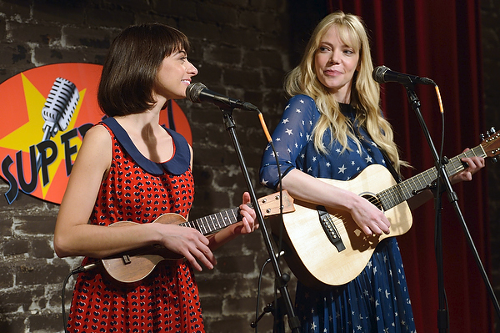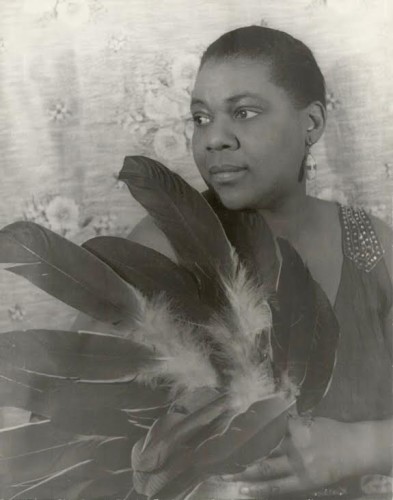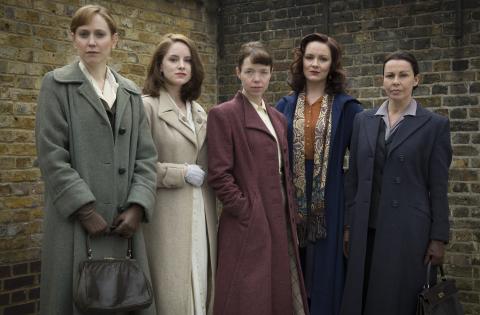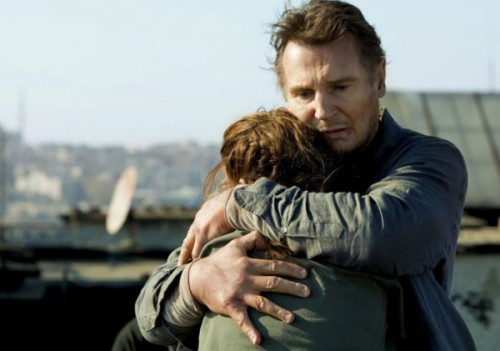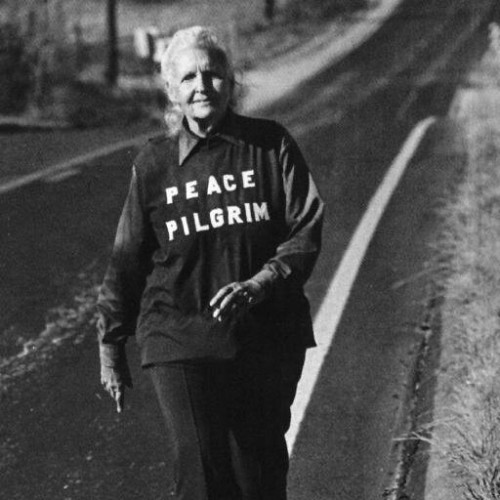
Written by Robin Hitchcock.
You probably know Garfunkel and Oates from their funny songs on YouTube, but you might have missed the eight-episode series they had last summer on IFC. (I’m guessing most people did, because it got cancelled.) But the series is now available on Netflix Streaming, and it is just the right level of quality where you’ll be happy you watched it but not miserable that there won’t be any more episodes.
It’s also an interesting study on some of the issues facing (caps-for-seriousness) “Women in Comedy.” We’re nearly a decade out from Christopher Hitchens mansplaining why women aren’t funny and the tidal wave of backlash it wrought. Today, no one who is relevant doubts that women are funny, at least not out loud. But there are still issues of how women are permitted to be funny, and Garfunkel and Oates illustrates both the limitations and opportunities created by our expectations for female comedians.
1. How much can we talk about “girl stuff”?
Some people have the attitude that truly funny women prove their worth by not “relying on” their gender. (See also: white people praising Black comedians and other funny PoC for not “always talking about race.”) This is a fabulous silencing tactic, telling marginalized groups that their lived experiences are boring and unfunny while reinforcing the white male point of view as universal. The idea that telling jokes about “girl stuff” limits funny ladies to being “funny, for a girl” is predicated on the idea that womanhood is a deviation from the fundamental human experience. Which is sexist bullshit.

The good news is that this sexist, silencing notion means a lot of funny material has been under-explored and is ripe for the picking. Garfunkel and Oates is at its best when it deals directly with “girl stuff.” In one episode, a club manager gives Riki and Kate the unsolicited creative note, “Please, no material about your periods.” When he leaves, Riki asks, “Why do guys think we talk about our periods?” and then they immediately start sharing details about their periods. They aren’t even that funny, but I still laughed like crazy, just because NO ONE EVER MAKES JOKES ABOUT THEIR PERIODS. Even though periods are hella funny. And guys are WORRIED about hearing about periods from female comedians. Very, very concerned.
My favorite episodes are the ones about dating (especially the one where they test the “Little Mermaid theory” and see if the guys they date will notice or mind if they don’t say any words, at all), the pressures of “aging” (“29/31“), and family planning (“Sometimes my womb is all like ‘hey girrrl’ and my mind is like ‘shhhhhhhh’ but right now I feel like, ‘yeah, maybe?'”). This perspective separates Garfunkel and Oates from simply being a retread of Flight of the Conchords.

Fortunately, I think Garfunkel and Oates is part of a sea change for female comedians where it’s not only okay to tackle female experiences, but applauded, by both women and men (see this interview with writers for Inside Amy Schumer). Of course I don’t think funny women should only cover “women’s issues” (G&O also get great mileage out of weed, awkward social situations, and adult immaturity), but I’m so glad that there is less pressure to shy away from it. Bring on the period jokes, ladies.
2. Is it OK to “use” our sexuality?

If you’ll recall (and I’ll forgive you if you’ve blocked it from your mind), Hitchens’s main argument for the unfunniness of women was that men will have sex with us even if we don’t make them laugh. A corollary to this is that those rare funny women that exist are “making up for” being unattractive in some way. And it also follows that if an attractive woman succeeds in comedy (or in any other field, really) it isn’t on the basis of her talent, but rather her looks.
This is a tricky minefield to navigate, and it gets all the more complicated when you’re telling jokes about sex. Which Garfunkel and Oates do (my all-time fave of their songs is still “I Don’t Understand Job“). And all the bullshit of Hollywood, wherein these skinny, pretty, able-bodied white women would be considered too “weird looking” to be conventionally attractive, it is even more of a mess. Unfortunately, Garfunkel and Oates doesn’t seem to know how to approach these problems, either, yielding some of their flattest material. In the second episode, Riki and Kate meet their porn parody counterparts Garfinger and Butts, who briefly eclipse their fame with their innuendo-laden track “Come on Me.”

Garfinger and Butts crack the G&O formula, but are also portrayed as total idiots. The message is unclear: are Riki and Kate admitting that some of their success is owed to their sex appeal, or bemoaning that they’d be more famous if they landed somewhere else on the hot vs. cute scale.
And the attempts to explore the hot vs. cute spectrum through tall blonde Riki and short brunette Kate also generally fail. In one episode, they “swap hair” with wigs, and blonde Riki is treated nicely by women for the first time, where normally friend-zoned Kate seals the deal for once. It was a little over-the-top for me, as was the episode where Kate is accidentally sent to an audition meant for Riki and looks ridiculous trying to be sexy.
3. Haters gonna hate

I think my biggest disappointment with Garfunkel and Oates was the episode where an anti-fan trolls one of their shows. I thiiiiink the joke with Dennis is that if people did the stuff they do online (shout “make a sandwich”) in the real world it would be more obviously pathetic. Unfortunately, it wasn’t funny, and the cartoonishness of it felt like it was trivializing online harassment, and minimizing the harm of more subtle IRL sexism. The same episode has the “no period talk” manager and a hostile, condescending sound guy, who would have been more pointed characters without the straw man Dennis drawing attention away. And I would have loved to see more about the subtle forms of sexism women in comedy have to deal with (like in the first episode, where a male comedian Riki is seeing tweets her joke as his own, which if he’d done to a male friend would be a sin akin to murdering their mother).
Of course, all of this was of more interest to me because I am a woman who writes and performs comedy, but I think civilians would agree with my “good but not great” take on the Garfunkel and Oates series. Fortunately, one of the benefits of having more female-driven comedy out there is that it isn’t the end of the world when some of it comes out as just OK.
Robin Hitchcock is a writer based in Pittsburgh and a member of the all-female comedy troupe Frankly Scarlett. She is on an eternal quest for the perfect tampon joke.
